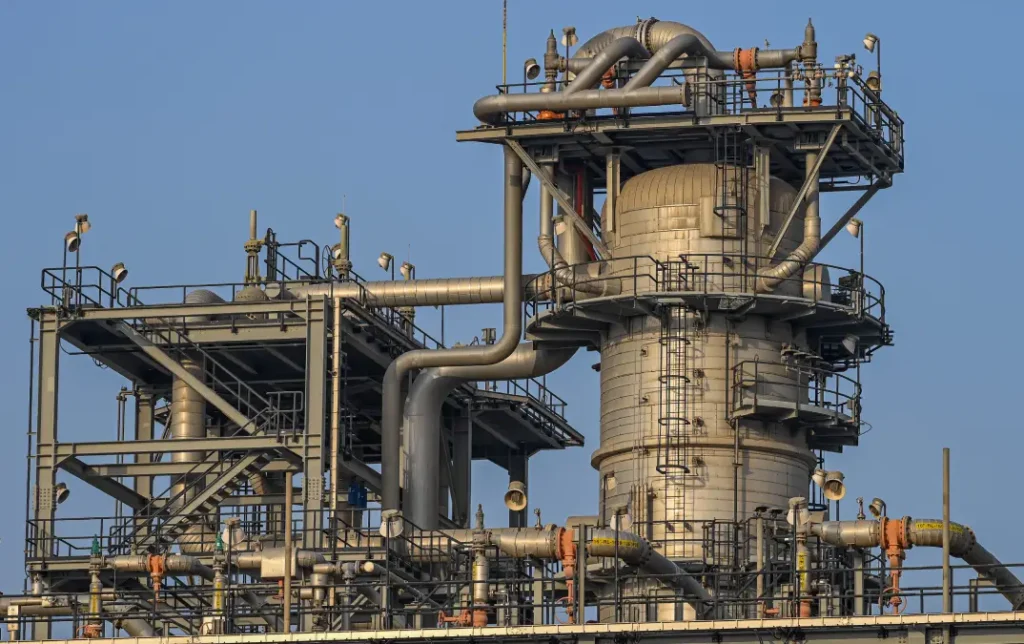Saudi Arabia is the world’s leading oil producer and exporter, playing a pivotal role in global energy markets. Home to the second-largest proven oil reserves (about 267 billion barrels), the Kingdom accounts for roughly 12-15% of global oil production, making it the most influential member of OPEC (Organization of the Petroleum Exporting Countries).
Oil Exploration in Saudi Arabia
The Ghawar Field, the largest conventional oil field in the world, along with other major fields like Safaniya (largest offshore field) and Khurais, drives Saudi Arabia’s massive output. The state-owned Saudi Aramco, the world’s most valuable oil company, oversees exploration, production, and export operations.
Saudi Arabia’s oil dominance gives it significant geopolitical and economic leverage, allowing it to influence global oil prices through production adjustments. As the world transitions toward renewable energy, the Kingdom is investing in downstream refining, petrochemicals, and carbon-neutral initiatives to maintain its leadership in the energy sector. With its vast reserves, low production costs, and strategic partnerships, Saudi Arabia remains a cornerstone of global oil supply and a key player in shaping the future of energy.
Elements and Processes of Oil Exploration
Oil exploration is a complex and multi-stage process that involves locating and extracting hydrocarbons from beneath the Earth’s surface. This industry plays a crucial role in global energy supply, fueling economies and industries worldwide. In this article, we’ll break down the key elements of oil exploration, including:
- What is an Oil Field?
- Understanding Oil Reservoirs
- Oil Wells: Extraction Points
- Drilling Rigs: The Workhorses of Oil Exploration
- The Oil Exploration Process
1. What is an Oil Field?
An oil field is a large area containing underground deposits of crude oil (and often natural gas) that can be extracted for commercial use. Oil fields vary in size—some span just a few square kilometers, while others cover vast regions.
Key Features of an Oil Field:
- Multiple reservoirs (underground storage areas of oil and gas).
- Network of wells for extraction.
- Surface facilities for processing and transporting oil.
Example: The Ghawar Field in Saudi Arabia is the world’s largest conventional oil field, producing millions of barrels per day.

2. Understanding Oil Reservoirs
An oil reservoir is a porous and permeable rock formation that traps hydrocarbons (oil and gas) beneath the Earth’s surface. These reservoirs are formed over millions of years from decomposed organic matter under high pressure and temperature.
Types of Oil Reservoirs:
- Conventional Reservoirs – Oil flows easily through permeable rock (e.g., sandstone).
- Unconventional Reservoirs – Oil is trapped in tight rock formations (e.g., shale) and requires advanced extraction techniques like fracking.
How Oil is Trapped:
- Cap rock (impermeable layer) prevents oil from escaping.
- Structural traps (folds, faults) or stratigraphic traps (rock layer changes) hold the oil in place.
3. Oil Wells: Extraction Points
An oil well is a drilled hole that allows access to underground oil reservoirs. Wells can be vertical, horizontal, or directional, depending on the reservoir’s location.
Components of an Oil Well:
- Wellhead – Surface equipment controlling pressure and flow.
- Casing – Steel pipes lining the well to prevent collapse.
- Production Tubing – Pipes transporting oil to the surface.
- Christmas Tree – Assembly of valves and fittings to regulate flow.
Types of Wells:
- Exploratory Wells (wildcat wells) – Test for oil presence.
- Production Wells – Extract oil commercially.
- Injection Wells – Used in Enhanced Oil Recovery (EOR) to push more oil out.
4. Drilling Rigs: The Workhorses of Oil Exploration
A drilling rig is a massive structure used to drill wells into the Earth’s crust. Rigs can be land-based or offshore (fixed platforms, floating rigs).
Types of Drilling Rigs:
- Land Rigs – Used on solid ground; mobile or fixed.
- Offshore Rigs –
- Jack-up Rigs (shallow water)
- Semi-submersibles (deep water)
- Drillships (ultra-deep water)
Key Rig Components:
- Derrick/Mast – Supports drilling equipment.
- Drill String & Bit – Rotates to cut through rock.
- Mud System – Circulates drilling fluid to cool and lubricate.
- Blowout Preventer (BOP) – Emergency valve to stop uncontrolled flow.
5. The Oil Exploration Process
Oil exploration follows a structured approach:
1. Geological & Geophysical Surveys
- Seismic surveys (sound waves map underground structures).
- Satellite & gravity surveys identify potential reserves.
2. Exploratory Drilling
- Test wells confirm oil presence.
3. Appraisal & Development
- Assess reservoir size and viability.
- Build infrastructure (wells, pipelines, processing plants).
4. Production & Extraction
- Oil is pumped to the surface.
- Transported via pipelines or tankers.
5. Abandonment & Reclamation
- Wells are sealed; land is restored post-production.
Oil exploration is a high-tech, multi-billion-dollar industry that powers modern civilization. Understanding its key elements—oil fields, reservoirs, wells, and rigs—helps appreciate the engineering and science behind energy production.
As technology advances, methods like 3D seismic imaging, directional drilling, and AI-powered exploration continue to revolutionize the industry, making oil extraction more efficient and sustainable.